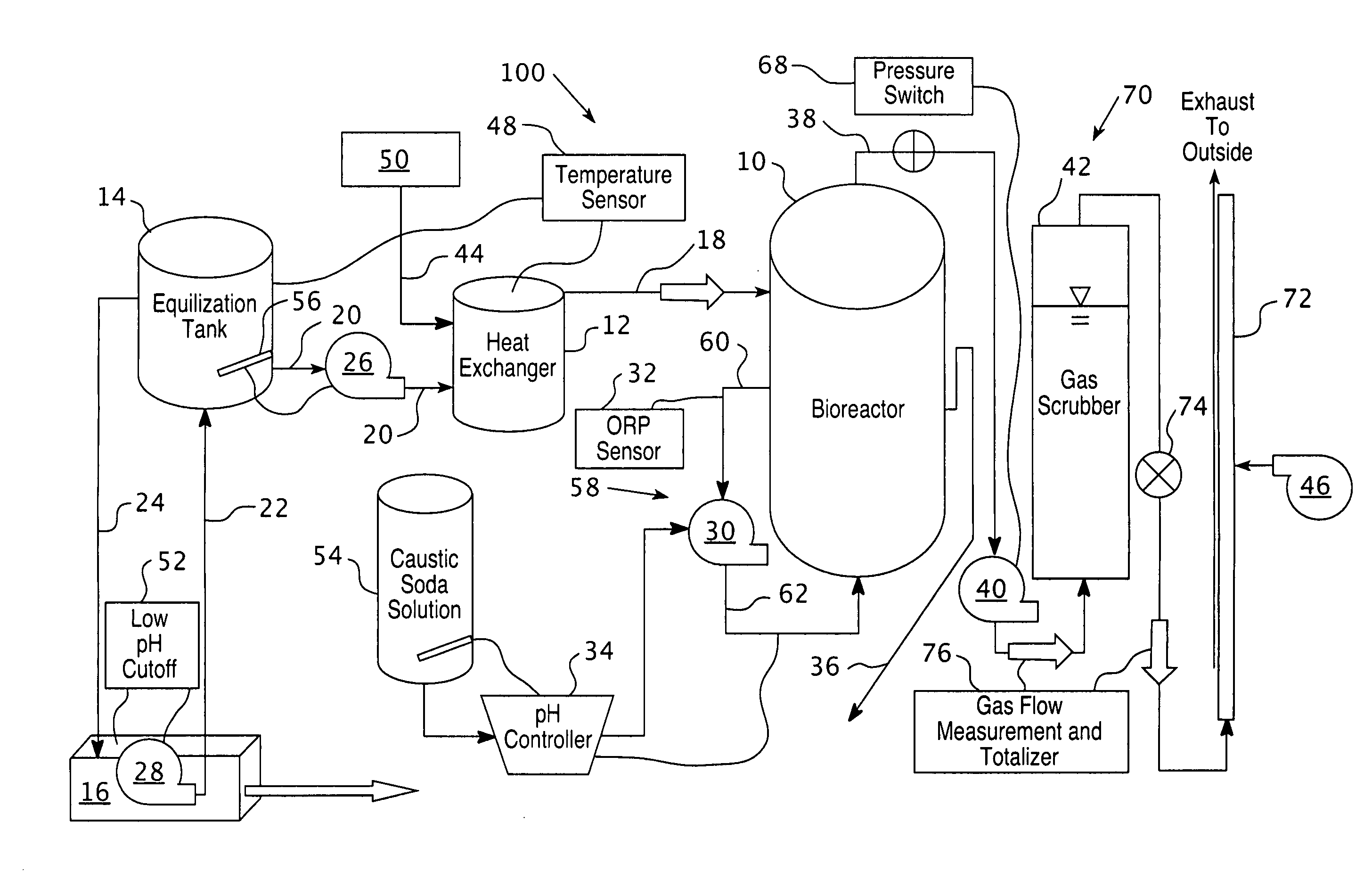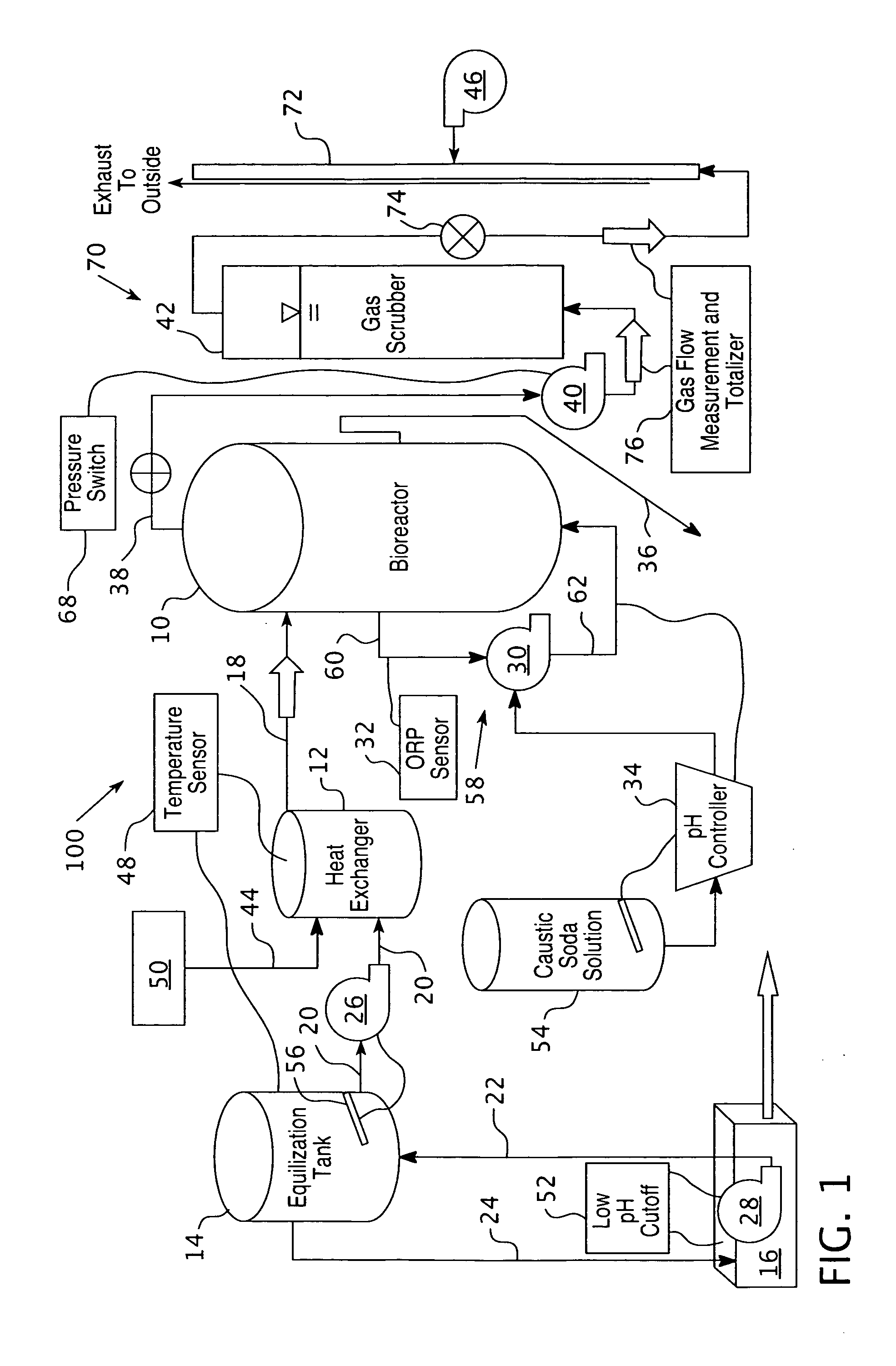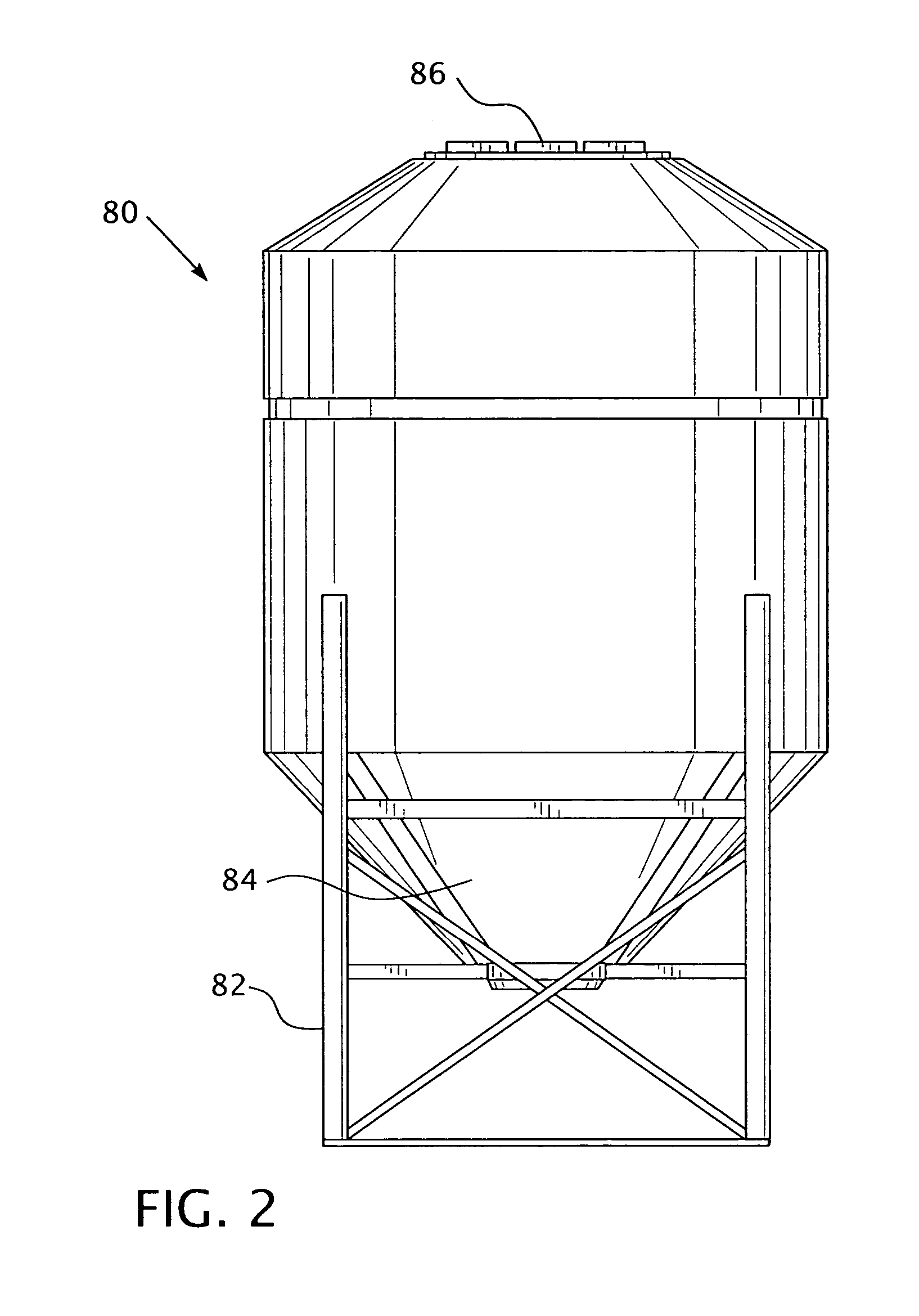Hydrogen producing apparatus utilizing excess heat from an industrial facility
a technology of industrial facilities and hydrogen production apparatus, which is applied in the field of concentrated hydrogen production apparatus, can solve the problems of requiring fossil fuels as energy sources, requiring substantial and useful hydrogen gas creation from microorganisms, and requiring large quantities of hydrogen by microorganisms
- Summary
- Abstract
- Description
- Claims
- Application Information
AI Technical Summary
Benefits of technology
Problems solved by technology
Method used
Image
Examples
example 1
[0079] The apparatus combines a bioreactor with a grape juice facility. The organic feed material is a grape juice waste product diluted in tap water at approximately 32 mL of juice per liter. The solution uses chlorine-free tap water or is aerated previously for 24 hours to substantially remove chlorine. The dilution and aeration occur in a treatment container. The organic feed material is then conveyed into the feed container through a passage.
[0080] The organic feed material is heated in the feed container to about 65° C. for about 10 minutes to substantially deactivate methanogens. The organic feed material is heated with a heat exchanger with excess heat from the grape juice facility. The organic feed material is conveyed through a passage to the bioreactor wherein it is further inoculated with Kleibsiella oxytoca. The resultant biogases produced by the microorganisms metabolizing the organic feed material include hydrogen without any substantial methane.
example 2
[0081] A multiplicity of reactors were initially operated at pH 4.0 and a flow rate of 2.5 mL min−1, resulting in a hydraulic retention time (HRT) of about 13 h (0.55 d). This is equivalent to a dilution rate of 1.8 d−1. After one week all six reactors were at pH 4.0, the ORP ranged from −300 to −450 mV, total gas production averaged 1.6 L d−1 and hydrogen production averaged 0.8 L d−1. The mean COD of the organic feed material during this period was 4,000 mg L−1 and the mean effluent COD was 2,800 mg L−1, for a reduction of 30%. After one week, the pHs of certain reactors were increased by one half unit per day until the six reactors were established at different pH levels ranging from 4.0 to 6.5. Over the next three weeks at the new pH settings, samples were collected and analyzed each weekday. It was found that the optimum for gas production in this embodiment was pH 5.0 at 1.48 L hydrogen d−1 (Table 2). This was equivalent to about 0.75 volumetric units of hydrogen per unit of r...
PUM
 Login to View More
Login to View More Abstract
Description
Claims
Application Information
 Login to View More
Login to View More - R&D
- Intellectual Property
- Life Sciences
- Materials
- Tech Scout
- Unparalleled Data Quality
- Higher Quality Content
- 60% Fewer Hallucinations
Browse by: Latest US Patents, China's latest patents, Technical Efficacy Thesaurus, Application Domain, Technology Topic, Popular Technical Reports.
© 2025 PatSnap. All rights reserved.Legal|Privacy policy|Modern Slavery Act Transparency Statement|Sitemap|About US| Contact US: help@patsnap.com



